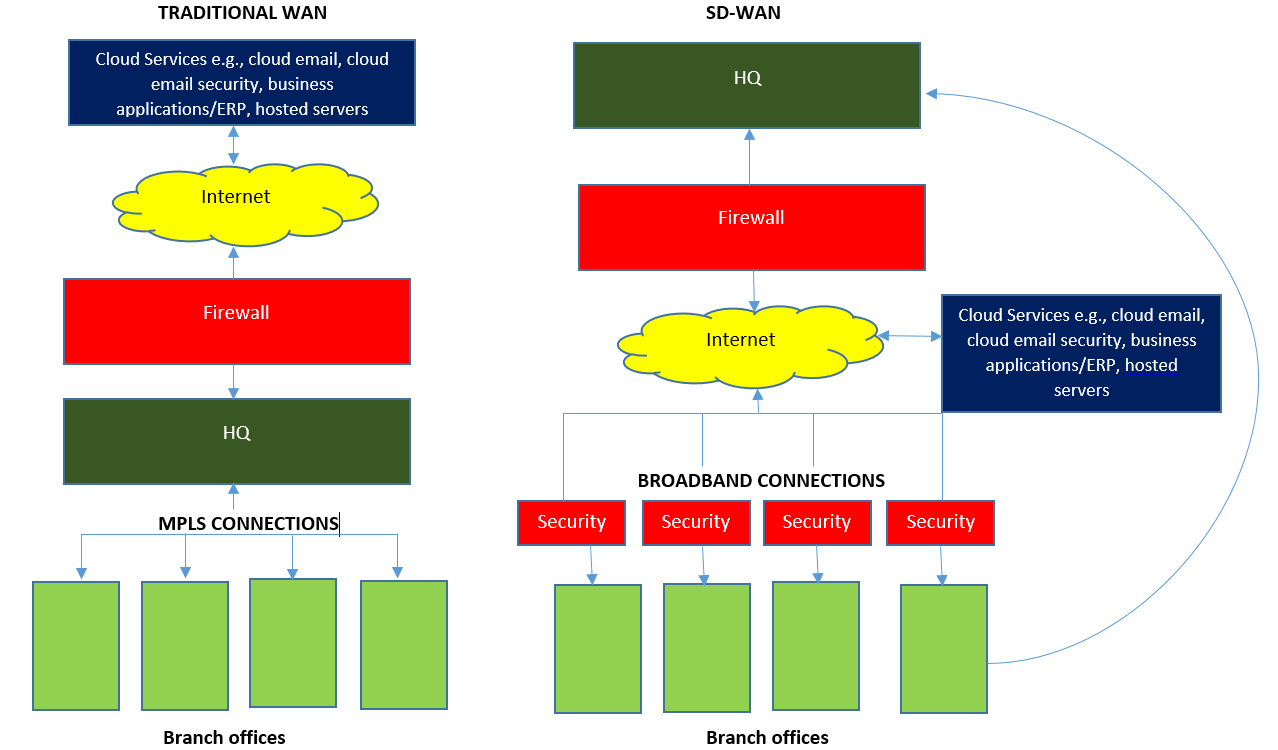
Firewall as a Service (FWaaS)
More and more businesses have moved many of their functions to cloud computing, leveraging the financial, security and network performance benefits of such services.
This move to cloud-based platforms and the increased use of mobile devices for business has led to the dissolution of the traditional network perimeter. Company network perimeters are no longer restricted to the physical walls of the corporate environment.
The evolution of the corporate network perimeter has led to the development of Firewall as a Service (FWaaS). FWaaS moves firewall functions away from the traditional network perimeter and into the cloud.
How Firewall as a Service (FWaaS) works

Firewall as a Service takes the functionality of a traditional hardware appliance hosted in your office premises to the cloud. This extension of security functionality beyond the physical office premises allows the workforce to connect remotely from different mobile devices to access systems, applications and other services on the cloud.
Why Do Organizations Need FWaaS?
A firewall is the cornerstone of an organization’s cybersecurity strategy. A basic firewall defines and enforces a network boundary by inspecting and filtering all incoming and outgoing traffic. Other more advanced firewalls also detect and block attempted cyberattacks.
Traditional, hardware-based firewalls are effective in many contexts, but unfortunately, they are not effective in all situations. Some potential limitations of a hardware-based firewall include:
• Location: A firewall can only inspect traffic that passes through it. This means a hardware-based firewall will not protect users remotely accessing resources on the cloud.
• Scalability: Many hardware-based firewalls have finite resources that limit the amount of traffic they can inspect and secure. Businesses whose needs grow beyond the limits of their existing hardware are forced to purchase and deploy new hardware.
FWaaS helps organizations to address situations where these limitations are a concern.
Advantages of Firewall as a Service (FWaaS)
Some of the benefits that organizations stand to gain by deploying FWaaS include:
i. Unified Security Policy: With FWaaS, an organization can send all its traffic through one of its firewalls. This enables the enforcement of consistent and unified security policies across its entire network. It becomes easier for IT staff to administer security policies at one single point.
ii. Flexible Deployment: Unlike hardware-based firewalls whose deployment location is limited to an organization’s geographical location, FWaaS has no such limitations as it is cloud-based.
iii. Easy deployment and maintenance: Purchasing, configuring and deploying hardware-based firewalls can be complex, often requiring specialized knowledge to ensure all systems are installed correctly. In contrast, FWaaS eliminates many of these setup steps as these firewalls are implemented as virtual appliances in the cloud.
iv. Easy to scale: FWaaS is much easier to scale than hardware-based firewalls as the pool of available resources can grow and shrink as your business needs change.
SD-WAN: Network Security as a Cloud Service
While FWaaS provides a great deal of benefits to an organization, there is still more that can be done.
FWaaS used in combination with other technologies like software-defined wide area networking (SD-WAN), enables an organization to restructure its network security to better meet the company’s needs and its users.
So what is SD-WAN?
SD-WAN is a technology that decentralizes and optimizes network routing within the corporate WAN. An SD-WAN appliance uses application control to determine the source of network traffic. It applies application-specific policies to optimally route this traffic over multiple transport media, such as broadband internet, mobile networks, and multiprotocol label switching (MPLS) circuits.
Unfortunately, the utility of SD-WAN can be limited when using hardware-based firewalls. Because all traffic must pass through a firewall for security inspection and policy enforcement, SD-WAN’s ability to optimize routing depends on the organization’s firewall deployment.
On the other hand, FWaaS can be deployed alongside SD-WAN so that every SD-WAN appliance includes integrated security. This means that traffic can be routed directly to its destination without sacrificing network security or visibility. As the use of cloud solutions and support for staff working from home or remotely increases, a combination of FWaaS and SD-WAN can dramatically improve the performance and usability of company networks.
Users in branch offices or those working remotely (such as working from home or traveling) can access resources such as the internet directly without passing through the HQ. And the same goes for accessing company resources hosted on the cloud such as ERPs, hosted servers, cloud email, hosted email security, etc. Branch offices need not experience down simply because there is a problem in the HQ, e.g., power outage or internet outage.
Switching to Firewall as a Service (FWaaS)

As described above, FWaaS offers several benefits to an organization. Its use of a cloud-based virtual appliance gives it a level of flexibility and scalability that many hardware-based firewalls struggle to match.
Used in combination with a secure SD-WAN deployment, organizations can move network routing and security functions to the network edge, which is vital for maintaining network performance as the use of cloud-based solutions and support for remote work grows.
Contact us for more information on FWaaS and SD-WAN solutions.